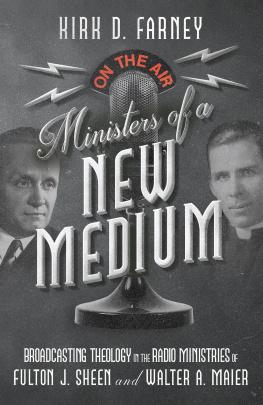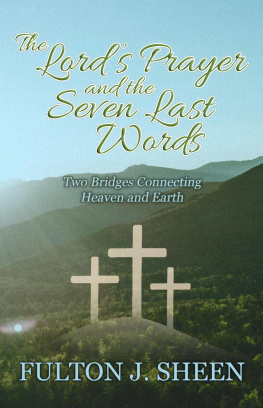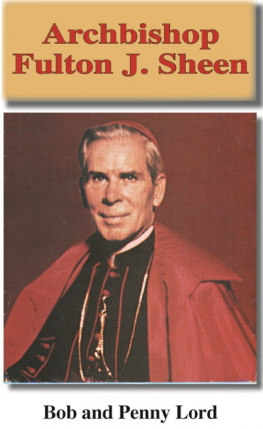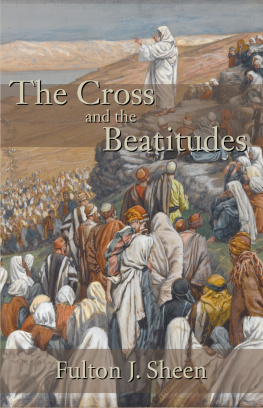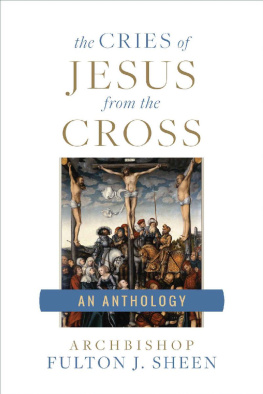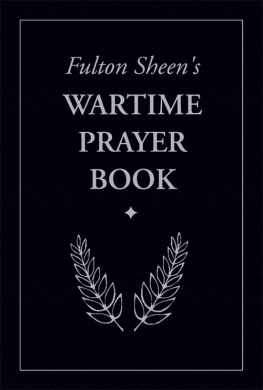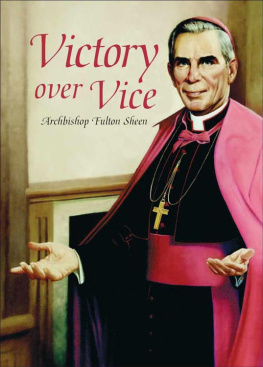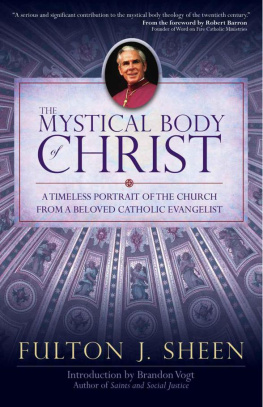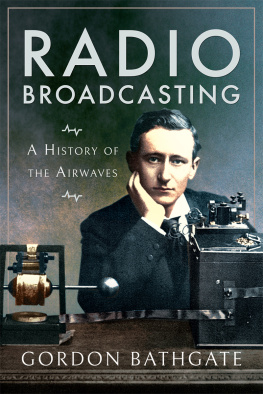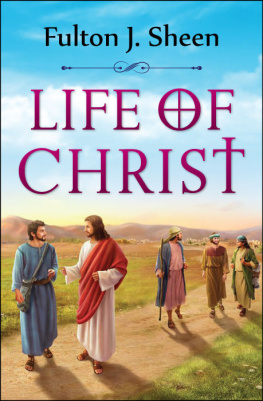Sommaire
Pagination de ldition papier
Guide
InterVarsity Press
P.O. Box 1400, Downers Grove, IL 60515-1426
ivpress.com
2022 by Kirk Douglas Farney
All rights reserved. No part of this book may be reproduced in any form without written permission from InterVarsity Press.
InterVarsity Pressis the book-publishing division of InterVarsity Christian Fellowship/USA, a movement of students and faculty active on campus at hundreds of universities, colleges, and schools of nursing in the United States of America, and a member movement of the International Fellowship of Evangelical Students. For information about local and regional activities, visit intervarsity.org.
Scripture quotations marked NRSV are from the New Revised Standard Version Bible, copyright 1989 National Council of the Churches of Christ in the United States of America. Used by permission. All rights reserved worldwide.
Scriptures marked KJV are from the King James Version, public domain.
Quotations from Walter A. Maiers published sermons are used by permission from International Lutheran Laymens League, all rights reserved.
The publisher cannot verify the accuracy or functionality of website URLs used in this book beyond the date of publication.
Cover design and image composite: David Fassett
Image: Image courtesy of Concordia Historical Institute, St. Louis, Missouri
ISBN 978-1-5140-0323-7 (digital)
ISBN 978-1-5140-0322-0 (print)
This digital document has been produced by Nord Compo.
To Cheryl, Erin, and Mitch
Foreword
MARK A. NOLL
READERS OF THIS DEEPLY researched and skillfully written book are in for two surprises. The first reveals the remarkable national popularity of two radio preachers during the years when that medium became a fixture in American households. Monsignor Dr. Fulton Sheen, the featured speaker on NBCs Catholic Hour, and the Rev. Dr. Walter Maier, of the self-funded The Lutheran Hour, became media stars in the era that also saw Jack Benny, Edward R. Murrow, Fibber McGee & Molly, Kate Smith, and Bing Crosby emerge as household names. Amazingly, if judged by mail received, general name recognition, and, in the case of Maier, successful fund raising, these radio preachers may have even outshone the other media stars of their era. Kirk Farneys illuminating account provides the best kind of detailed information on the multi-dimensional savvy that propelled the Catholic Hour and The Lutheran Hourbut also the many practical and logistical difficulties that Maier and Sheen overcame to become not just Ministers of a New Medium, but masters of that medium.
The second surprise is just as noteworthy, for Sheen and Maier were not simply popular. They were also popular as supremely well-educated speakers, unabashed advocates of classical Christian teaching, and confident representatives of relatively marginalized denominations. Unlike some radio preachers of their era and many thereafter, Sheen and Maier did not dumb down, sensationalize, or pander. Although they communicated through accessible language and well-chosen anecdotes, they did not hide the fact of their superior learning. Instead, they devoted this learning and their skill as communicators to preaching the main doctrines of classical Christian orthodoxy. The chapters in the book devoted to the preached theology of the two amount to extended expositions of the Christian creeds. The message they broadcast, in other words, was not watered-down.
Walter Maiers Lutheranism and Fulton Sheens Catholicism made their radio careers even more remarkable. Sheen became a radio fixture only a few years after a surge of anti-Catholic sentiment greeted candidate Al Smith, who in 1928 campaigned as the first Catholic nominee for president from a major political party (he was a Democrat). Opposition resulting from Protestant fears and the belief that Catholicism equated to anti-democratic authority would survive well past the years treated in this book. Yet, with a captivating speaking style and a message effectively communicating main Christian teachings, Sheen sailed calmly by the nations hereditary anti-Catholic disposition.
Prior to Maier, American Lutheranism was less a threat than an unknown quantity. Lutherans had enjoyed a secure place in pockets of the American landscape since the colonial period. But their identification as the church of German and Scandinavian immigrants set them apart, as did a theology that retained elements of the sixteenth-century Reformation other American Protestants had left behind. In addition, the traumas of the First World War had inspired intense anti-German reactions in areas of the country where most German descendants (and also Lutherans) lived. Yet Maier negotiated whatever hesitations listeners might have had about a Lutheran voice as skillfully as Sheen did for the greater suspicions about heeding a Catholic.
Ministers of a New Medium illuminates early radio history, makes a welcome addition to the American history of Christianity, and brings two larger-than-life personalities into sharper focus. From its pages readers will come away with historical and biographical insights, but also two sturdy and edifying expressions of the Christian faith itself.
Acknowledgments
THE NUMBER OF INDIVIDUALS who contributed to the conception, research, writing, and publication of this book, both directly and indirectly, is significant and I am deeply grateful to every one of them. Certain contributors, however, deserve special mention. First and foremost is Mark Noll. Mark welcomed me to the University of Notre Dame in 2008, as I left a twenty-six-year career in global banking to pursue PhD studies full-time. He served as a mentor, adviser, and coach as I completed my studies and wrote my dissertation, the latter of which provides the foundational text of this book. Mark has since provided steady encouragement and guidance as I refined my manuscript and secured the appropriate publisher. Most importantly, he continues to be a cherished conversation partner and friend.
I appreciate the professionalism and support of the staff of IVP Academic. Jon Boyd, academic editorial director, saw merit in this project and provided editorial wisdom, constructive advice, and timely positivity along the way. I am grateful for his patience and humor through it all. Additionally, I am thankful for Rebecca Carhart, who skillfully shepherded this project from draft to publication.
Several knowledgeable archivists enabled me to complete the necessary research for this book. I am especially indebted to Mark Bliese and Daniel Harmelink of Concordia Historical Institute, to Sister Connie Derby, RSM, of the Roman Catholic Diocese of Rochester, to Gerry Perschbacher of Lutheran Hour Ministries, and to Keith Call and Bob Shuster of the Buswell Library Archives & Special Collections, Wheaton College.
A special thanks is due another outstanding scholar who also happens to be the son of one of this books subjects. Paul Maier, professor emeritus of ancient history at Western Michigan University, repeatedly and graciously responded to my inquiries in person, by email, and via telephone. In addition to invaluable information, he offered kind words of encouragement.
I am grateful to my colleagues at Wheaton College for their support, especially our trustees, fellow members of the senior administrative cabinet, the management team that I have the privilege to lead, and members of our faculty. I am particularly appreciative of President Phil Rykens encouragement that I complete this project and continue other scholarly pursuits, understanding that my administrative responsibilities can easily consume each day. Additionally, I cannot adequately express my thanks to my administrative assistant, Lynn Wartsbaugh, for her helpful efforts in reading and rereading the manuscript, catching errors and typos, suggesting edits, confirming citations, and properly formatting, all the while guarding my office door during periods when I needed to work on this book without interruption.

